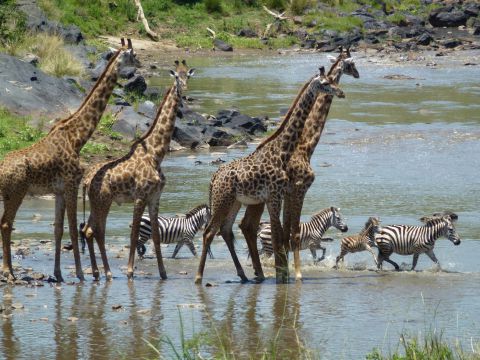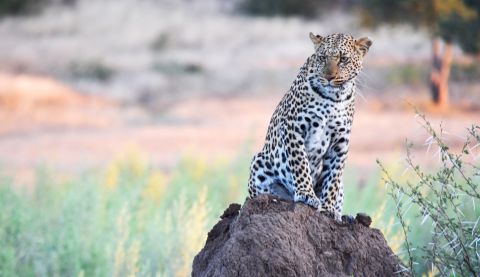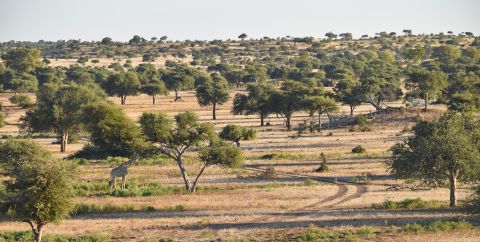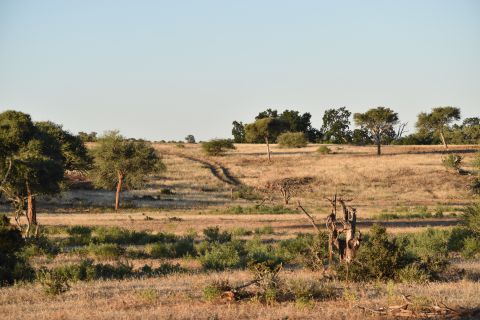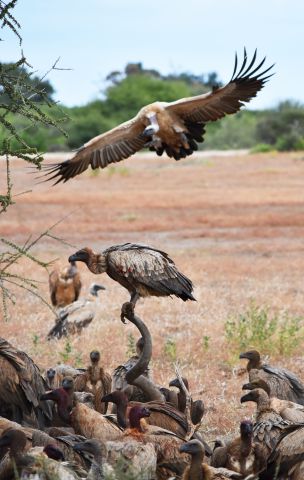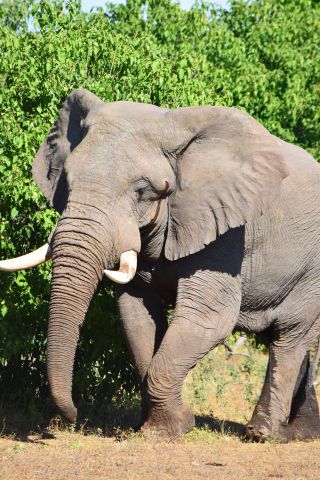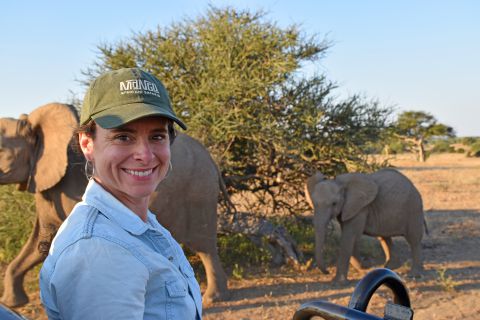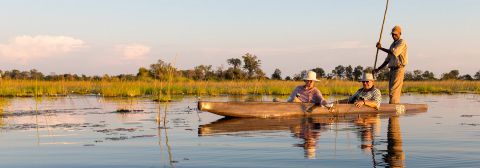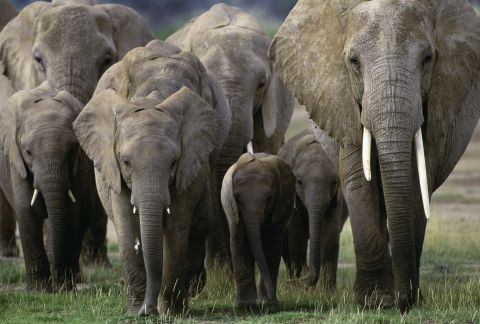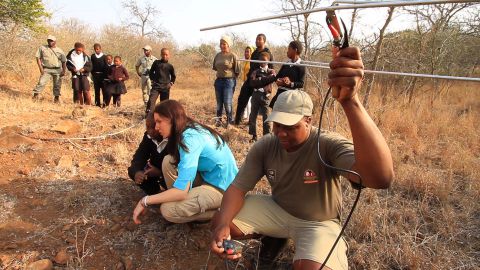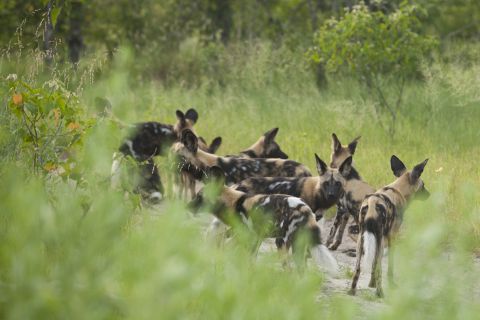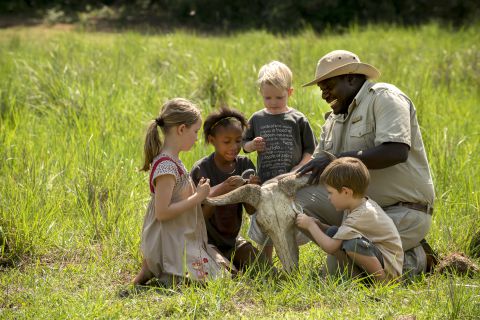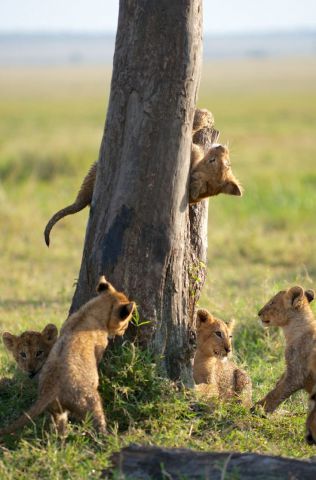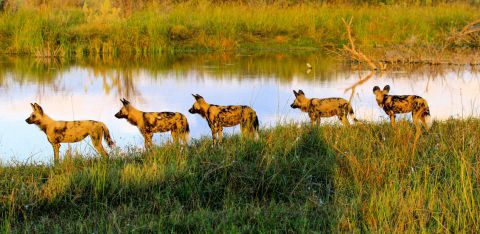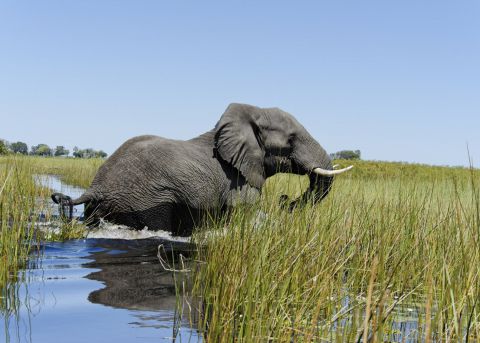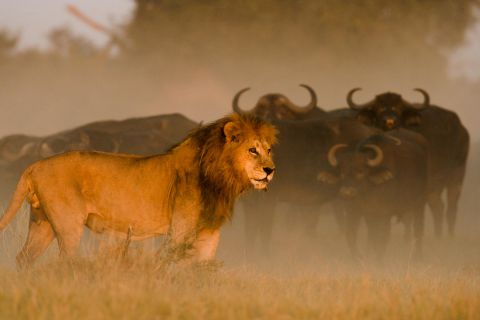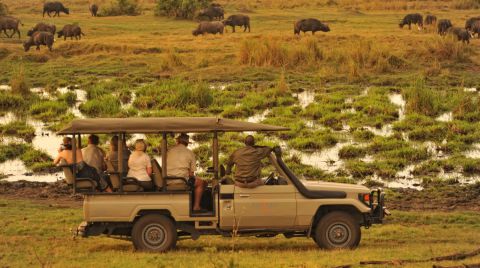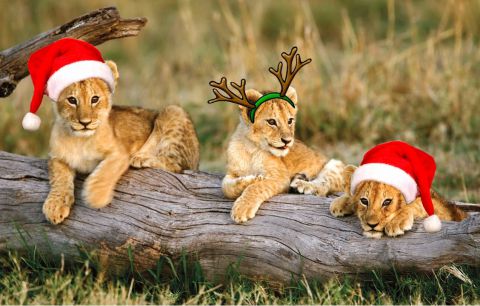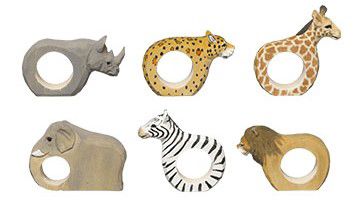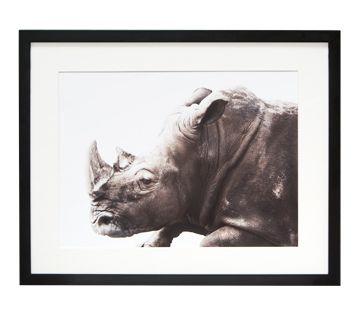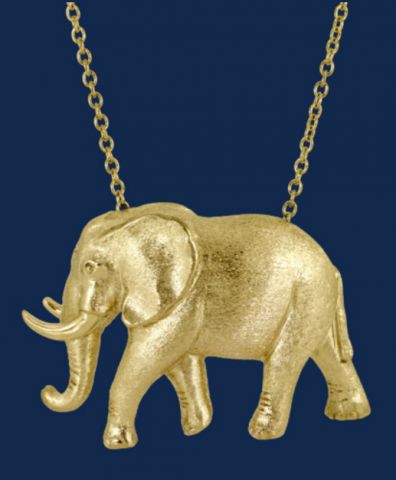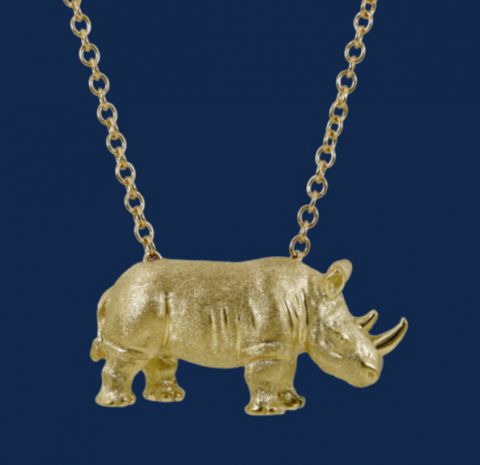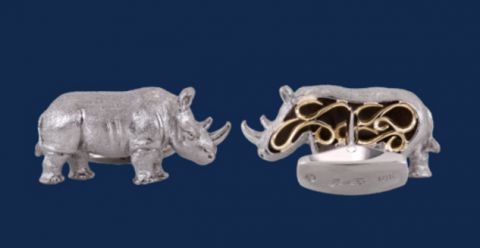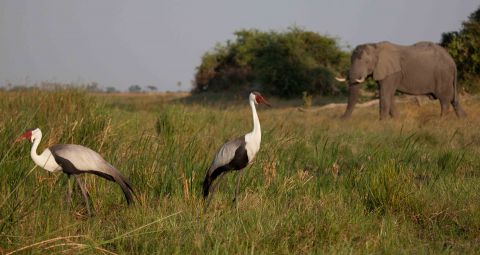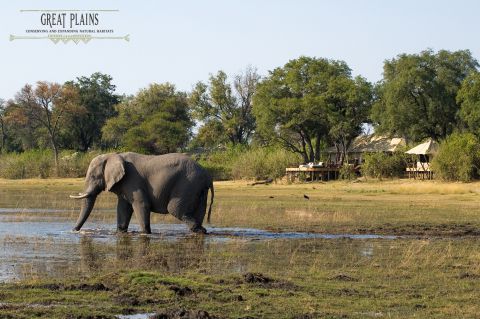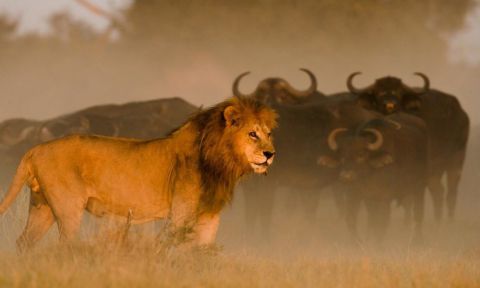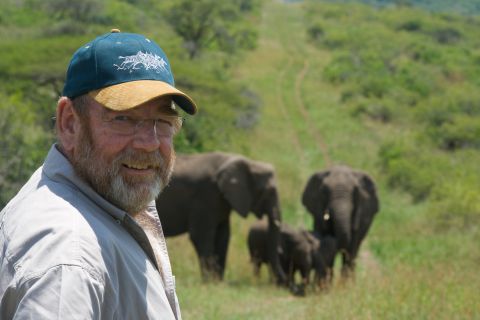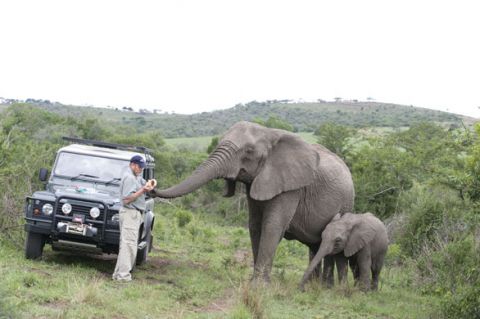Around the Next Corner & Other Tales
The Crossing
Posted 2017-04-14
Guest post by Jon Lee - Mango client
From our vantage point on the south bank of the river in the relative safety of our ancient but reliable Land Cruiser we could see the drama unfolding. On our last full day of safari, this would likely be our final chance to witness the spectacle of a zebra crossing, and with John and Sam, our intrepid guide and driver, we were once again witnessing a familiar scene that we had seen play out on our three prior attempts that day. A large zeal of plains zebras would amass on the north bank, seeking a safe passage across the river on their annual migration south to the Serengeti. The alpha male would move down to the edge of the water, but Nile crocodiles, anticipating the zebras, would have already moved into position, seeking prey, thwarting the zebras. In this location, only one croc was present, giving the zebras their best chance, but the alpha was wary of the situation and would not commit the dazzle to the crossing. Equatorial light was beginning to fade as we reluctantly resigned ourselves to being content with watching the fascinating predator prey interaction without actually seeing the zebra crossing; but then a journey of giraffes appeared and formed a tower in the river, perilously close to the lurking crocodile.
Throughout our two-week, five camp safari tour of Kenya, our guides and drivers had been consistently competent in all ways. If we showed interest, enthusiasm and curiosity for the flora and fauna that extended beyond quick sightings and photo ops of the fabled Big Five, our guides responded accordingly and made every effort to share with us their deep, intimate, and indigenous knowledge of natural history. Subsequently, we made every effort to distinguish between plains and Grevy’s zebras, black and white rhinos, spotted and striped jackals, and the full bewildering spectrum of antelopes, ranging from ponderous eland to elegant gerenuks and dainty dik-diks. On our walking safari, we had close encounters with both baboons and baboon spiders. We are keen birders, and our guides made extra efforts to locate and identify over 200 species, including the quirky Kori bustard, the spectacular lilac breasted rollers in flight, and the elusive riparian fin foot. In Ol Pejeta, we sallied forth for a night safari and were rewarded with two sightings of aardvarks.
Above and beyond our life-list bird and megafauna sightings, our most spectacular experiences came from seeing interspecies interactions. One early morning we passed an hour observing a female lion digesting her first feeding on a freshly killed zebra. A pair of jackals, in pursuit of their own morning meal, moved in. We watched raptly as the two jackals, working in tandem, would take turns moving around the lioness, slink in to her zone of proximity to distract and pull her away far enough away from the carcass so that the other jackal could dart in and snatch a few tasty morsels. In another encounter, we chanced on three cheetahs, a mother and her yearling cubs, resting in the shade. A solitary spotted hyena, perhaps attracted by the scent of a recent kill, happened by. The mother could have easily chased off the intruder but instead looked on in attentive disdain and allowed her offspring to handle the situation. We showed the capacity to sustain our focus on these interactions, and we were rewarded with lifetime encounters.
Now, on our penultimate game drive, we all watched incredulously as a tower of giraffes, apparently indifferent to the presence of the infamous enormous crocodile, assembled in the stream right at the crossing. Widely believed to be mute, giraffes do have an amazing capacity to communicate with each other, and apparently, with other species as well. Their presence and body language assured the alpha zebra that they would stand as crossing guards, and the zeal of zebras, with their tower of giraffes offering a measure of protection, thundered across the river to the safe sanctuary of the south bank. At one point, one giraffe moved further up the north bank to signal to the remaining half of the dazzle to cross. Jan peered through her long lens and followed her bliss. I secretly hope the croc would make a kill. John and Sam, with two lifetimes in the Masai Mara, had never witnessed giraffes intervening in the predator prey dance of zebra and crocodile. The final zebra splashed up the south bank joining the safety of the others as they reassembled and resumed their southern migration with their customary zeal. The tower of giraffes morphed into a journey of giraffes, and they moved onward into the fading African light. Sam fired up the Land Cruiser, and we headed back to camp for our final sundowner in Kenya.
Text & Photo by Jon Lee - Mango Safaris client
Exploring Mashatu with Teresa & Kelsea
Posted 2017-03-30
Mashatu Wildlife Encounters: Friendly Elephants & Mating Leopards
On a recent trip through Botswana, Teresa and Kelsea from the Mango team spent time exploring the Mashatu Game Reserve. Nestled in the far eastern corner of Botswana, wedged between Zimbabwe and South Africa, Mashatu is a large game reserve that has remained relatively quiet in the safari world. Boasting a landscape quite different from most Botswanan destinations, Mashatu offers an interesting change of scenery, as well as some spectacular game viewing. The land is dominated by sweeping plains interrupted by rocky ridges and sandy riverbeds. You can watch the wind as it sweeps across the plains, creating rippling waves in the sun-bleached grass.
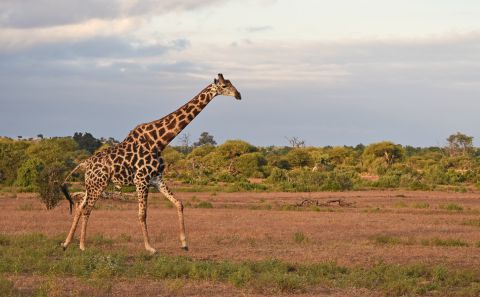
While driving around the expansive landscape, we were treated to many memorable sightings. Lionesses hunting during the night, a leopard stalking an impala, a huge venue of vultures feeding on a kudu carcass, and a pair of courting leopards. Pretty great stuff!
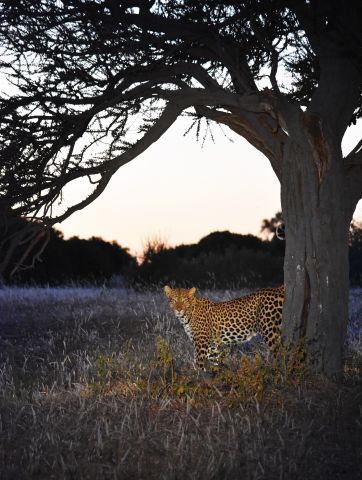
One of the best parts was the elephant population though. The demeanor of a reserve's elephants is a good indicator of how the land is managed. If they are skittish or aggressive toward the safari vehicles, it may mean that they have been hunted in the past, or have been harrassed by safari vehicles. (Even worse, it may mean that there is illegal poaching going on.) But in Mashatu, the elephants were divinely relaxed. They meandered right up to the vehicles, sniffing nonchalantly around us before digging into the tasty shrubs sticking out from under the wheels. On one evening game drive, we encountered a large breeding herd that had a dozen or so little ones. We watched them romp about their mothers' feet as they paraded by our parked vehicle. It was truly wonderful!
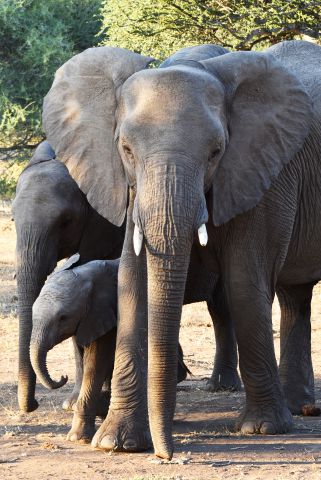
Beyond the flashier sightings, we also had several encounters with rarely seen creatures. Such sightings are the cherry on top of a great safari. Leopards, lions and elephant are always wonderful, but getting the chance to see bat-eared foxes, genets, servals, and even a pair of porcupines is what makes a safari really special. Many of these nocturnal creatures can be challenging to spot, so it was a real treat to see them.
- Teresa in Mashatu -
All photos by Kelsea Lee
The Wonderful Watery World of the Okavango Delta
Posted 2017-03-22
Celebrating International Water Day
Water is the foundation of life on Earth. None of this planet’s spectacular ecosystems would exist without water – in fact, the amount of water present is a defining feature of any ecosystem. No place better embodies the complex role of water in an ecosystem than the Okavango Delta. It would seem logical that the dry season would be the time without abundant water and that the wet season would be time of plenty. In most places in the world, this simple logic holds true – but not in the Okavango Delta. After the seasonal rains recede from the Botswana skies, an influx of water seeps slowly but ever so persistently into the delta’s panhandle, spreading out into a wide fan covering nearly 6,000 square miles. This water fell as rain in the Angolan highlands, and has been traveling south down the Okavango River for roughly a month. When it reaches the delta, the riverbanks give way to the utter flatness of the sandy Kalahari, spilling into channels, filling lagoons, and once more creating islands amid the floodplains. Despite the watery paradise, this is considered the dry season, since no rains are falling locally. It’s a strange but fascinating conundrum that showcases how wonderfully unusual the natural world can be.
It’s no secret that the Mango team absolutely loves the Okavango Delta, frequently sending clients there and going on annual visits ourselves to suss out the latest camps. When you visit, this beautiful region captures your heart. Check out our favorite Okavango destinations, and call us to start planning your own adventure today!
Photos from Wilderness Safaris
Listen to the Young Voices
Posted 2017-03-03
A Celebration of Conservation's Bright Future
Conservation isn’t a hard subject to sell – it conjures up images of majestic creatures, pristine wilderness, and people who have dedicated their careers to preserving it all. But this year the UN has chosen a very interesting theme: Listen to the Young Voices. With over a quarter of the world’s population aged between 18 to 24 years, there has never been a better time to cultivate a new generation of conservationists who are passionate about saving the world’s biodiversity.
At the 2016 UN Conference of the Parties the first ever resolution for ‘Youth Engagement’ was adopted to help boost new support for conservation. Young people have always been agents for change, and it is essential to harness their power and ingenuity. With countless species teetering toward the edge of extinction and innumerous more categorized as threatened, there is no time to delay action. Innovative approaches to wildlife conservation are vital for the future of Earth’s biodiversity. As a generation enmeshed with technology, there is nearly boundless potential for creative solutions to the challenges facing conservation.
More millennials are embracing eco-lifestyles, seeking out ways to improve the planet’s wellbeing through their actions and choices. Wildlife conservation starts at home, and there are several ways you and the youth in your life can get involved. Start simple with a movie night featuring world-class wildlife documentaries (Netflix has some great options); volunteer with a local wildlife conservation group (find one here); encourage them to study conservation science; or take them on an inspirational trip to see these beautiful creatures in person.
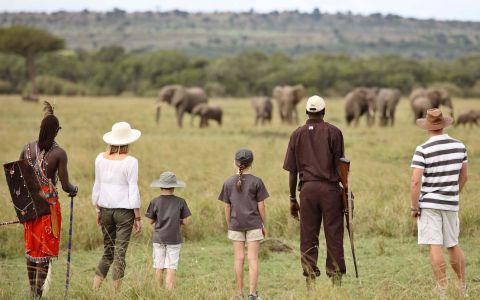
The youth are powerful, educated, enthusiastic, and ready to take on the challenges of the future. Wildlife is an invaluable part of the world, and we cannot overlook its importance to our and our planet’s wellbeing. So remember to listen to and encourage the young voices of conservation in your life. Only together can we make a difference for Earth’s biodiversity.
Check out our best conservation trips here!
Photos from &Beyond, Art Wolfe & Wildlife ACT
The Super Lions of Northern Botswana
Posted 2017-02-23
On Safari in the Duba & Selinda Concessions
For the last few decades, travelers to the remote Duba concession have been wowed by buffalo-hunting lions found only in that area. It’s exceedingly rare for lions to hunt such large, cantankerous animals, but the Duba area specializes in it. Duba safaris often center around game drives tracking these daring hunters and to watch their impressive travails. It’s an incredible experience, and many travelers return time and again to immerse into the pristine wilderness of Duba.
To contrast this, on the Selinda concession north of the Linyanti Wetlands, travelers are treated to a handful of activities that celebrate the diverse Selinda landscape. After a twenty-year drought, the Selinda Spillway has once more started flowing as the annual flood waters from the Angolan highlands seep into the delta. Beyond the usual game drives, guests can explore Selinda on guided bush walks, boat excursions, or on a multi-day canoe trails safari.
When combined, both areas offer a well-balanced and overall spectacular safari experience in this famed region of Botswana.
But it wasn’t always this way. Due to recent changes in the weather and flood patterns, these regions have switched places, with Duba getting wetter and Selinda getting drier. This has led the camps in the area to flip the script on their typical safari model and create a new one that better fits the transforming landscape.
As water levels rise at Duba, populations of semi-aquatic red lechwe antelope have exploded. Despite their reputation as buffalo hunters, the lions now forego these challenging beasts in favor of the much more docile lechwes. They’re still have a go at the big boys every once in a while, but unfortunately it’s much less common now. Even without this signature experience, Duba still delivers in a huge way. The camps now feature a much broader selection of activities, rather than focusing in on just one experience. You can paddle quietly down the channels carved out by hippos, spend a morning on foot with a knowledgeable guide, or meet the bushveld’s incredible nocturnal wildlife on a nighttime game drive. Guests come away with a much truer safari experience as a result.
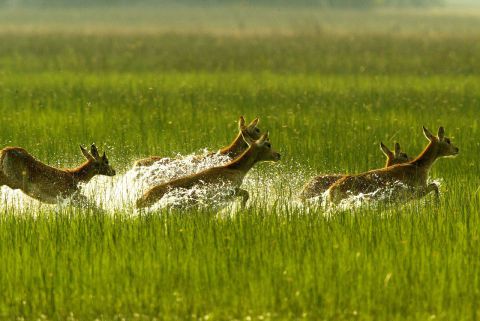
With guides telling us that Selinda is drier than it’s ever been, it’s becoming the hotspot for predators hunting big prey. On my recent trip, I personally witnessed two sub-adult buffalos being taken from their large herd by a pride of determined lions. Happening just a few feet away from our vehicle, it was an experience I’ll never forget. I had always wanted to see this unusual phenomenon of buffalo hunting lions and was thrilled when I learned I’d be visiting Duba on this trip. Little did I know that Selinda would be home to this once in a lifetime sighting. Nature is funny that way – you think you know what’s going to happen, but you just never know what lays in store for you.
Despite flipping the script, these two areas still combine quite nicely year round. The natural world is wonderfully unpredictable, it’s a big reason why we’re so drawn to the wilderness, so it’s important to avoid bogging down in preconceived notions about areas we think we know. This is why Mango Safaris continually explores Africa, checking out new areas and visiting old favorites time and again to ensure we’re always in the know. With this wealth of knowledge and dedication, we help you create the trip of a lifetime that centers around the latest and greatest, rather than past reputations and experiences.
Photos from Brendon Cremer, National Geographic & Great Plains Conservation
VOTE NOW: Travel + Leisure 2017 World's Best Awards
Posted 2017-01-15
Mango Safaris is thrilled to once more be part of the Travel + Leisure 2017 World's Best Awards!
Please vote for us as we continue to share the beautiful wilds of Africa, ever expanding our expertise and seeking out the most spectacular destinations for our clients. 2017 will be our most exciting year yet, with many new destinations being added to our repetoire. Mango always strives to keep our finger on the pulse of the latest and greatest in Africa travel. With your continued support, we can keep crafting the best safaris in the world for you.
We wouldn't be where we are today without our fantastic customers. Thank you once again for helping make Mango Safaris such a success!
Gifts that Give Back to Africa's Wildlife
Posted 2016-12-11
Gifts that Give Back
As family and friends gather together for the holidays, feelings of gratitude and happiness abound. During this time of giving, you can easily channel a little of that love into your gifts by getting ones that give back to African wildlife. We’ve collected some of our top conservation-based gifts in a range of prices so you can support your favorite safari critters no matter what your tastes are.
J. Crew Elephant Tees – Daphne Sheldrick Elephant Orphanage
Available in women’s and men’s styles, these tee-shirts support the adorable baby elephant and rhino orphans at the Daphne Sheldrick Wildlife Trust. Click on the images below to check them out:
Endangered Species Chocolate
Who doesn’t love a bar of delectable chocolate this time of year. Whether stuffing a stocking or tucking a bar into a hostess gift, you can’t go wrong with treats that support wildlife conservation. Available in classic flavors like Peppermint Crunch, or unique ones like Cinnamon, Cayenne & Cherries, you can purchase them online or at your local grocery store. Click on the images below to purchase:
Carved Wood Napkin Rings – World Wildlife Fund
Carved in the shape of iconic African wildlife, these napkin rings are the perfect way to bring a little safari charm to your next dinner party. Click on the image below to donate:
Framed Rhinoceros Art – World Wildlife Fund
Didn’t get any Nat Geo worthy shots last time you were on safari? No worries – with this beautiful rhinoceros print you can adorn your walls in gorgeous artwork. Click on the image below to donate:
Fostering a Baby Elephant - Daphne Sheldrick Wildlife Trust
If you're looking to make a donation in someone's name rather than buying a gift, it doesn't get any better than fostering a baby elephant. You can even read through the profiles of their little residents to choose which sweetheart you want to sponsor. Nothing warms your heart like knowing you're supporting the adorable orphans at the Daphne Sheldrick Wildlife Trust. Click on the adorable photos below to browse the profiles:
BE-Jewelled – Wild Aid
If you really want to go all out, the BE-Jewelled collection by Alexander Jewell is a stunning way to show your love of conservation. Created to support Wild Aid, the line features pieces honoring African wildlife. With pieces for both men and women, this is a very special way to give back. Click on the pieces below to shop:
The Hidden Threat Killing Cheetahs
Posted 2016-12-05
Today is international cheetah day. A day when we celebrate these speed demons of the savannah. A day when we admire their svelte form and delicate spots. A day when we wonder what the future holds of these incredible creatures. At this point it’s a real toss up about what’s faster – a hunting cheetah or their devastating rate of extinction. With only 7,000 adults left in the wild (that’s less than 10% of their historical population), there is no time to delay in taking action against their extinction. The problems driving their rapid decline are numerous – human wildlife conflict in rural areas and shrinking habitats, for instance. But there’s one other threat – a hidden one that’s not often mentioned but has real potential to push cheetahs right out of existence. The exotic pet trade.
Several thousand cheetahs are held in captivity around the world, shown off as the trophies and whims of men without any respect for nature. When cubs are as young as four to six weeks old, they are stolen from their mothers in the wild and tossed into cages for sale on the black market. On their way to their final destinations, many go days without food or water and are left to wallow in their own feces. Only 15% of the cubs are estimated to survive the horrendous ordeal. Unfortunately, their nightmare is far from over. Fed an improper diet and denied the exercise they desperately need, most captive cheetahs die very quickly.
It is estimated that over the past 10 years, around 1,200 cheetahs have been illegally smuggled out of Africa. With their populations teetering on the edge of extinction, the exotic pet trade is damaging the chance of any of recovery that wild cheetahs may have. Cheetahs deserve to live freely on the savannahs of Africa, not tethered to chains or locked in cages without any chance of a normal life.
If you’d like to make a difference, please sign the petition to end the exotic pet trade. A link to the top cheetah conservation organization is included as well – check it out to learn more about getting involved.
Petition against the exotic pet trade
Join the 111 Club!
Posted 2016-11-30
Great Plains Conservation is a leading safari operator in the prime wildlife areas of East and Southern Africa. Their camps are located in carefully selected private reserves offering visitors the utmost in exclusive safari style. (In Botswana these reserves are called concessions.) Nestled in the Selinda Concession of the Linyanti Wetlands and the northern reaches of the Okavango Delta, Great Plains runs three fantastic camps.
Year round these camps offer guests the gamut of wildlife experiences, from viewing plains game and big cats, to boating safaris down the channels of the delta, to guided walking safaris offering unexpected perspectives. In addition to the traditional big game like lion, buffalo, elephants, leopard, giraffe and zebra, these camps offer guests the interesting option of birding.
Many people may discount birding as worthy experiences on an adventure such as this. You may hear folks say things along the lines of, "why waste time looking at herons and starlings? Let's go find some lions." Or, "this is boring, I want to go see some baby elephants!"
So often it seems that birding takes on an all or nothing mindset. It’s true that without lions and elephants, a safari would be incomplete, but if you stay a few nights with Great Plains, then we highly recommend trying your hand at birding. Especially around the Selinda area, the bird and wildlife densities are simply astonishing. There’s a pretty good chance you’ll go home with wonderful memories (digital or grey matter) of some pretty spectacular and over the top sightings.
Without the keen eyes of the guides, it is easy to perceive the bush as overly simplistic, without all of the diverse complexity that makes it such a rich environment. The lions and baby elephants are not planted in your path. They are wild animals and numerous factors determine the frequency in which one might come across them, including, but not limited to, the quality of guiding, seasonal changes, climate change, the flood levels of the delta and so much more. The point is that while you will see these exciting and quintessential elements, there are myriad ways to broaden your experience.
One personal favorite is checking out the many avian creatures that also call the bush home. While recently visiting the GPC Botswana camps, I had a phenomenal time learning about the abundant native birds, the European migrants, the impressive birds of prey, the 'little brown jobs' and more. I am nowhere near being classified as a ‘twitcher’ (serious birder), but it was very fun tabulating our sightings and realizing that in my two days at Selinda Camp we saw over 100 separate bird species, 111 to be exact. The finale was a rare one at that, the Rietze's helmeted shrike. To my surprise before we departed we were awarded a little prize of membership into the 111 club.
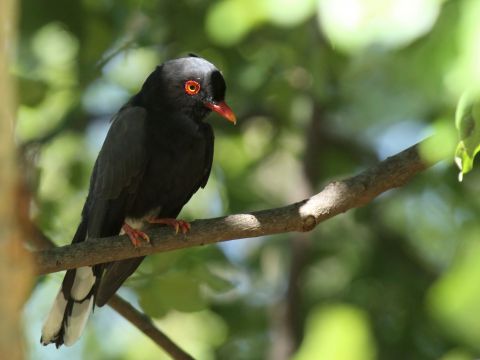
Sure seeing lions hunting buffalo from less than 30 feet away was a site that I will never forget. And seeing wild dogs on a freshly killed impala really pumped up the adrenaline. But I enjoyed the quiet moments between, when I was scanning the bush in search of new birds just as much as those sudden bursts of frenzied bush life.
So don't sleep on the birds. You do not need to be a bonafide expert to really have some fun – plus the hat is pretty stylish too.
Explore Selinda's incredible birds for yourself
Photos from Brian Huggins & Great Plains Conservation
The Elephant Whisperer
Posted 2016-11-19
Safari Tales: Mango's Favorite Books
The Elephant Whisperer
Written by Lawrence Anthony and Graham Spence
Whether you’re looking for a great book to take on safari, or one to transport you back to your days in Africa, we cannot recommend The Elephant Whisperer more. The book recounts the adventures and challenges Lawrence Anthony faced when he took in a herd of rogue elephants. Unwanted by other reserves because of their troublemaking ways, the herd was at risk of being put down unless he welcomed them in. Despite knowing the immense challenges that lay ahead, Anthony knew that he could not turn away the troubled beasts, managing to save their lives just in the nick of time. This book does a beautiful job transporting you right into the bush of Tanda Tula Game Reserve, following along on the trials and tribulations that herd’s arrival brought. In the end, love, soulfulness and compassion won over the elephants, creating a beautiful bond between Antony and the elephants. It is a true testament to the love that creatures can share, even if they’re not the same species. Beautifully written, this read is sure to immerse you in the touching world of elephant family life.
This is the perfect book to relax with between game drives, or to curl up with and daydream about your next safari. Beyond your traditional paperback, it’s also available through Kindle and Audible.
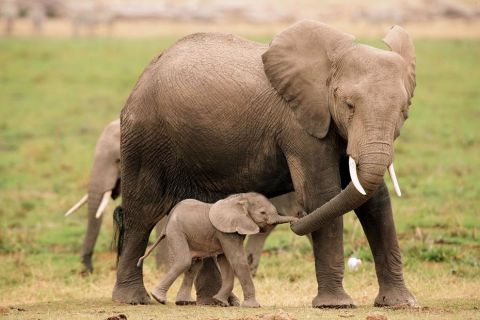
Visit Thanda Thula for yourself.
Explore by date



